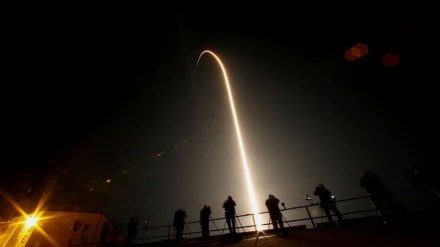Virgin Galactic has unveiled an exciting new research contract with the International Institute for Astronautical Sciences (IIAS), marking a significant milestone in space exploration and gender representation. This partnership will see an all-female astronaut team conduct cutting-edge research aboard Virgin Galactic’s new Delta Class spaceships.
Central to this pioneering mission is Dr. Shawna Pandya, an Indian-origin physician, aquanaut, and bioastronautics researcher. Dr. Pandya, who also serves as the Director of IIAS’s Space Medicine Group, will be joined by Kellie Gerardi and Dr. Norah Patten. Gerardi, a bioastronautics researcher from the U.S. and Director of IIAS’s Human Spaceflight Operations, previously flew as a payload specialist on the ‘Galactic 05’ mission. Dr. Patten, an aeronautical engineer from Ireland, brings her expertise in bioastronautics to the team.
This mission marks the second collaboration between IIAS and Virgin Galactic, following the successful ‘Galactic 05’ mission in 2023. That mission demonstrated the practical applications of suborbital research, such as testing novel healthcare technologies and examining fluid behavior in low gravity to inform future medical technologies and life-support systems.
The new mission is anticipated to take place within the first year of Delta commercial service, set to commence in 2026. Kellie Gerardi highlighted the mission’s significance, stating, “We were thrilled with the results from our fluid cell experiment on ‘Galactic 05’, which demonstrated our ability to accurately predict the behavior of fluid in a container in a weightless environment. We’ll be expanding on that research for our next mission, and I’ll be working to demonstrate our ability to control the behavior of the liquid as well.”
Virgin Galactic’s Vice President of Government Affairs and Research Operations, Sirisha Bandla, who made history as the second Indian-born woman to go to space on Virgin Galactic’s ‘Unity 22’ flight, expressed her enthusiasm about the continued partnership. “Our suborbital science lab is revolutionizing the field of microgravity research by offering routine, reliable access to space – and it’s great to see institutions like IIAS begin to build iterative and innovative campaigns around suborbital space-based research,” she said.
The Delta Class spaceships represent a significant advancement in Virgin Galactic’s capabilities. Each Delta spaceship is estimated to be capable of flying up to eight space missions per month, a twelve-fold increase compared to the original VSS Unity’s capacity. This increased frequency promises to enhance the potential for repeatable and reliable microgravity research.
The IIAS mission aims to build on the successes of ‘Galactic 05’, with the astronaut crew planning to fly additional fluid cells and integrate enhancements such as improved camera quality and accelerometer measurements. These upgrades will allow for more detailed and accurate data collection, facilitating further scientific breakthroughs.
Virgin Galactic’s commitment to advancing suborbital research through their Delta Class fleet underscores the potential for frequent, reliable access to space. This, coupled with IIAS’s dedication to innovative research, positions this upcoming mission as a pivotal step forward in both space science and the representation of women in STEM fields.
The collaboration not only highlights the technical and scientific achievements possible through suborbital flights but also emphasizes the importance of diversity and inclusion in space exploration. As the world moves closer to a new era of space research and travel, the involvement of all-female teams like the one led by IIAS sets a powerful precedent for future missions.
This mission promises to be a landmark in space research, showcasing how international cooperation, advanced technology, and diverse teams can drive the future of space exploration. Virgin Galactic and IIAS are not only pushing the boundaries of science but also inspiring a new generation of female scientists and engineers to reach for the stars.
